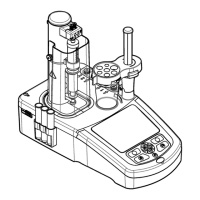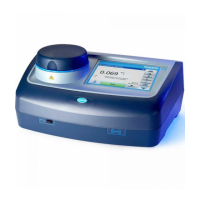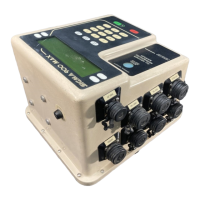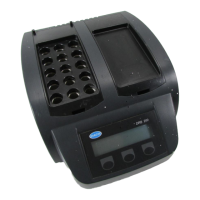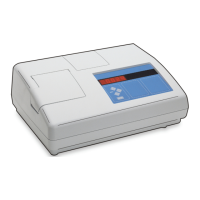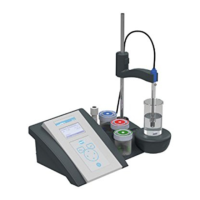PAO/5.64 mN
50081_PAONaThioCalibration.fm Page 51
PAO/5.64 mN
• Sample glassware must be cleaned and pretreated to satisfy any chlorine demand. See Section 7.2 Container Pretreatment on
page 63 for additional information.
• Always use organic-free reagent water for sample dilution (Cat. No. 26415-49).
• Rinse the electrode, temperature probe, and anti-diffusion tip with deionized water before every titration.
• Hach buffer reagents for chlorine titrations are highly recommended for this analysis.
• Download the “Certificate of Analysis” (COA) to obtain the exact concentration of any unopened bottle of Hach titrant or standard
solution. See Obtaining the Certificate of Analysis for Hach Reagents on page 41.
• Never substitute buffers designed for calibrating pH meters. They may contain dyes that interfere with amperometric titration.
• Never use buffers contaminated with mold or bacteria.
• It is recommended that titrations for titrant calibration be performed in triplicate.
• Adjust the contrast of the display by accessing the Methods menu, and then pressing 7 to lighten or 0 to darken.
• A distinction is drawn between running a new test and a new sample. Each test is a replicate run of the current or previous
sample analysis. The AutoCAT automatically tracks the results of a series of tests, and automatically calculates the mean and
standard deviation for all the results. Each test is given a different number, all of which are listed under the same Sample ID.
When starting a new sample, a new ID is assigned.
• The AutoCAT can accommodate any sample size. Standard Methods recommends a default volume of 200 mL. The volume can
be adjusted to expand the test range.
• The AutoCAT calculates concentration based on the sample volume. Make sure that the sample volume is correct.
• Rinse the electrode, temperature probe, and anti-diffusion tip with deionized water between calibrations.
• The data for any individual sample calibration may be repeatedly analyzed in manual or automatic mode. The results are not
stored in the archives until they are accepted.
• Press the STOP key any time to interrupt instrument operation. The user will be given the option to resume, restart, or quit
completely.
• Press CHECK MARK
key any time during data acquisition to halt data collection.
• Press the DEL key during any timer period (except the Start Timer) to immediately exit the timer and proceed to the next step in
the procedure.
• Flush the burette each day before the first sample test or calibration is performed. See Daily Start-up on page 26.
• Flush the burette when changing titrants. See Changing Titrants on page 25.
Amperometric Forward Titrant Calibration
Titration Workstation
Scope and Application: The following sequence guides the user through the calibration procedure for the
0.00564 N (5.64 mN) Phenylarsine Oxide titrants.
Sample Tips and Techniques
Reagent Tips and Techniques
Instrument Tips and Techniques

